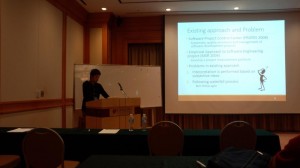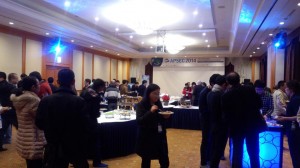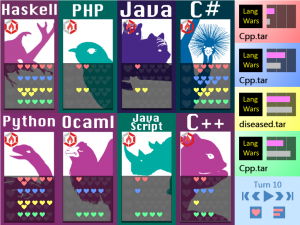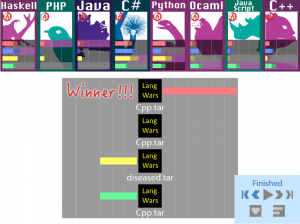*Call for Papers*
AsianPLoP 2015
4th Asian Conference on Pattern Languages of Programs
at Waseda University, Tokyo, Japan, March 5-7, 2015
http://patterns-wg.fuka.info.waseda.ac.jp/asianplop/
———————————————————————
*Important Dates*
Paper submission due: January 5, 2015
Shepherding begins: January 7, 2015
Acceptance notification: February 9, 2015
Final camera-ready: February 23, 2015
Registration due: February 23, 2015
Main conference: March 5-6, 2015
Seminar and Excursion (TBD): March 7, 2015
———————————————————————
*Objective and Motivation*
Asian Conference on Pattern Languages of Programs (AsianPLoP) will
take place at the third time, as a premier event for pattern authors
and users to gather, discuss and learn more about patterns and pattern
languages in the Asia region as well as other regions. The purpose of
AsianPLoP is to promote development of patterns, pattern languages,
technologies and experiences of patterns primarily about software;
however, these for domains outside software are also welcome.
AsianPLoP 2015 solicits paper submissions written in both of English
and Japanese; English papers and Japanese ones will be discussed in
different sessions. Both practitioners from the industry and
academics are invited to submit their papers. The conference solicits
the papers for the following different sessions.
* Writers’ Workshop – papers that document patterns and pattern
languages will be workshopped in the traditional PLoP format.
Papers that explore theories, techniques, applications, tools and
case studies in patterns are also welcome.
* Writing Group – papers of newcomers who want to learn how to better
elaborate an idea intended to evolve to a pattern or pattern
language. This is more like a hands-on tutorial on writing patterns.
AsianPLoP is a PLoP(R) Conference sanctioned by the Hillside Group.
PLoP is a registered trademark of The Hillside Group.
———————————————————————
*Paper Submission*
Paper submissions may include short papers (e.g. 1 page), containing
one or more patterns, longer pattern languages or sequences (e.g. 10
pages), or work-in-progress papers willing to get an in-depth
shepherding by an experienced pattern author at the conference.
There is no specific paper format; however the ACM conference format
( http://www.acm.org/sigs/pubs/proceed/template.html ) is recommended
because papers are considered to be included in a post-proceedings on
ACM Digital Library (pending).
Please submit your paper (in PDF) via the following submission site
by the due date. Submission site will be opened soon.
During shepherding, authors will have assigned a shepherd that will
help the author to improve the content and style of the paper. At the
end of the shepherding process, papers will be peer-reviewed again to
be accepted into the Writers’ Workshops of the conference.
———————————————————————
*Publication*
Accepted papers will be published in the workshop on-line proceedings.
These papers will also be included in a post-proceedings archived at
ACM Digital Library (pending).
1st post-proceedings of AsianPLoP 2010 is available at ACM DL, and
2nd and 3rd ones are currently under publishing process.
http://dl.acm.org/citation.cfm?id=2371736
Papers discussed at Writers Workshop qualify for submission to the
journal “TPLoP – Transactions on Pattern Languages of Programming”
published by Springer.
———————————————————————
*Conference Committee*
General Chair:
Hironori Washizaki, Waseda University
/ National Institute of Informatics, Japan
Program Committee:
Joseph Yoder, The Hillside Group, USA
Masaru Nagaku, National Institute of Informatics, Japan
Kiro Harada, Attractor Inc., Japan
Masanari Motohashi, Tokyo Institute of Technology, Japan
Yasunobu Kawaguchi, Rakuten Inc., Japan
Takashi Iba, Keio University, Japan
Eiichi Hanyuda, MAMEZOU CO., LTD, Japan
Chin-Yun Hsieh, National Taipei University of Technology, Taiwan
Foutse Khomh, DGIGL, Ecole Polytechnique de Montreal, Canada
Bimlesh Wadhwa, National University of Singapore, Singapore
(TBD)
Contact Us: asianplop [at] sse-project.org



